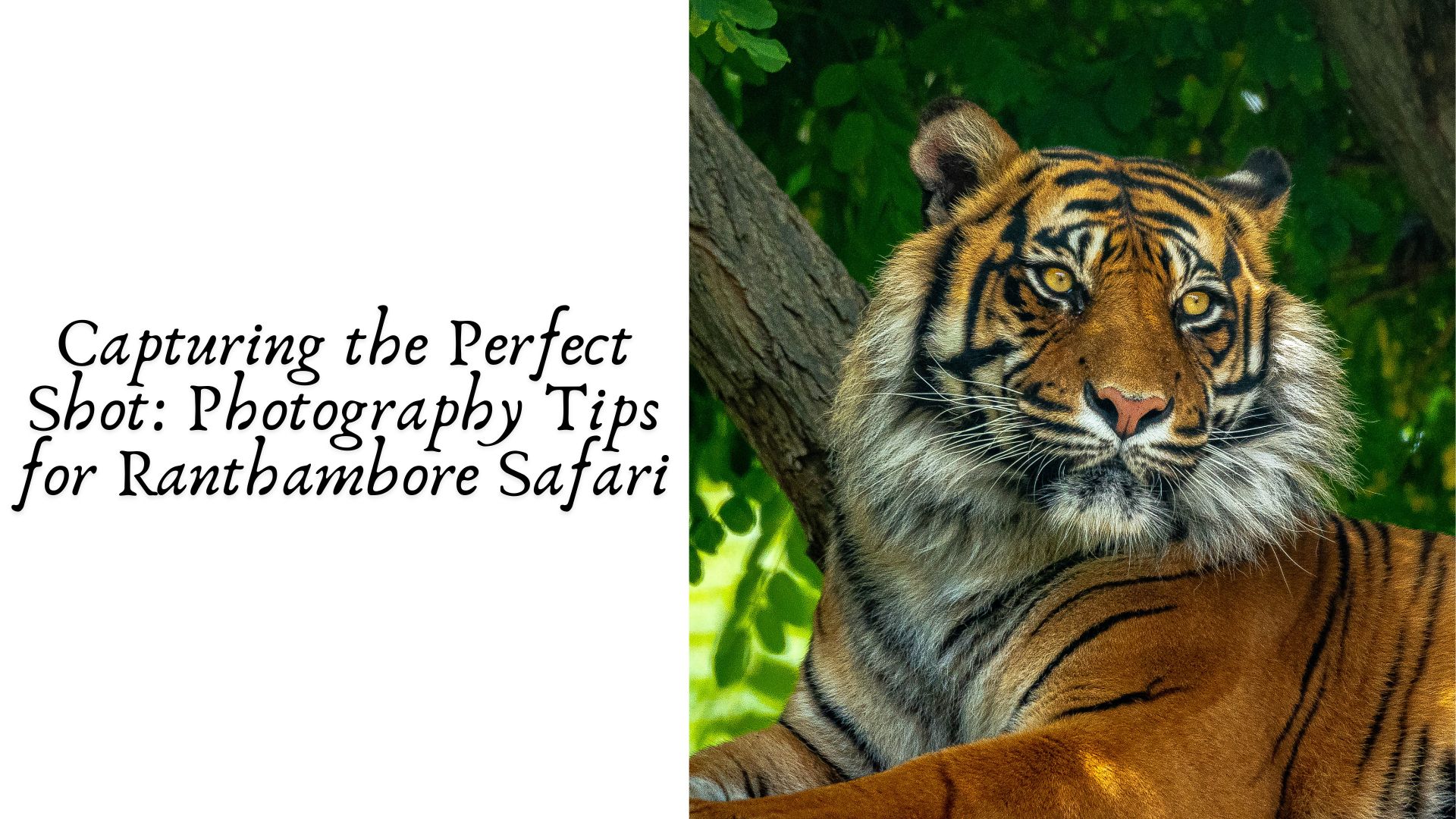Ranthambore Safari, a haven for wildlife enthusiasts and photographers alike, offers a unique opportunity to capture the raw beauty of India’s premier tiger reserve. With its rich biodiversity and stunning landscapes, this national park is a dream come true for anyone looking to immortalize their jungle adventures through photography. However, photographing in such an environment comes with its own set of challenges and nuances. This guide provides essential tips and techniques to help you capture the perfect shot during your Ranthambore Safari.
Understanding the Terrain and Wildlife
Know Your Subject
Before setting out on your safari, take some time to familiarize yourself with the wildlife of Ranthambore. Tigers, leopards, sambar deer, sloth bears, and various bird species are some of the park’s main attractions. Understanding the behavior and habitat of these animals will help you anticipate their movements and increase your chances of capturing dynamic shots.
Scout the Terrain
Ranthambore’s landscape is a mix of dense forests, open grasslands, and rocky terrains. Each type of terrain offers different photographic opportunities. For instance, the forest areas provide a dramatic backdrop for animal portraits, while the open grasslands are perfect for capturing action shots of animals in motion.
Essential Gear for Wildlife Photography
Camera and Lenses
A DSLR or mirrorless camera with a fast shutter speed and high ISO capability is ideal for wildlife photography. Lenses are equally important; a telephoto lens (200-400mm) is essential for capturing distant subjects, while a wide-angle lens can be useful for landscape shots and close encounters.
Tripod and Monopod
A sturdy tripod is crucial for stability, especially during low-light conditions or when using heavy telephoto lenses. A monopod can also be handy for quick mobility and support.
Other Accessories
Carry extra batteries, memory cards, and a lens cleaning kit. Binoculars are also useful for spotting wildlife from a distance, allowing you to be ready when the moment for a great shot arises.
Techniques for Capturing Stunning Wildlife Photos
Use Natural Light to Your Advantage
Early mornings and late afternoons, often referred to as the golden hours, provide the best natural light for photography. The soft, warm light during these times enhances the colors and textures of the landscape and wildlife, adding depth to your photos.
Patience and Perseverance
Wildlife photography requires a great deal of patience. Animals are unpredictable, and you might have to wait for hours to capture the perfect shot. Stay alert and ready to click, as moments of action can be fleeting.
Focus on the Eyes
The eyes are the most expressive part of an animal, and capturing them sharply can bring your photos to life. Use single-point autofocus and aim for the eyes to ensure they are in sharp focus.
Composition and Framing
The rule of thirds is a fundamental principle in photography. Place your subject off-center to create a more balanced and visually appealing composition. Additionally, use natural elements like trees and rocks to frame your shots, adding context and depth to the images.
Capture Movement
Photographing animals in motion can result in dynamic and compelling images. Use a fast shutter speed to freeze the action or a slower shutter speed to create motion blur, emphasizing the movement and energy of the scene.
Ethical Considerations in Wildlife Photography
Respect the Wildlife
Always maintain a safe and respectful distance from the animals. Avoid any actions that might disturb or stress them. Remember, you are a guest in their habitat.
Follow Park Guidelines
Adhere to all the rules and regulations of Ranthambore National Park. This includes staying within designated areas, not feeding the animals, and keeping noise to a minimum.
Leave No Trace
Ensure that you do not leave any litter or disrupt the natural environment in any way. The goal is to capture the beauty of nature without leaving a negative impact.
Post-Processing Tips
Enhance, Don’t Alter
Use post-processing software to enhance your photos, but avoid altering them to the point where they no longer represent the actual scene. Adjustments to brightness, contrast, and color balance can improve your images while maintaining their authenticity.
Sharpen and Crop
Slight sharpening can enhance the details of your photos, especially if you are planning to print them. Cropping can also help improve composition by removing unnecessary elements and focusing on the subject.
Noise Reduction
High ISO settings, often necessary in low-light conditions, can introduce noise into your photos. Use noise reduction tools to minimize this while preserving the details of the image.
Conclusion
Photographing Ranthambore Safari is a thrilling and rewarding experience, offering endless opportunities to capture the majestic wildlife and breathtaking landscapes. By understanding the terrain, using the right gear, employing effective techniques, and adhering to ethical guidelines, you can ensure that your photos not only capture the essence of this remarkable place but also reflect your respect and admiration for its natural beauty. Happy shooting!
Name: Eye of The Tiger
Address: Kolkata, West Bengal, India
P.No.: 7003976182

